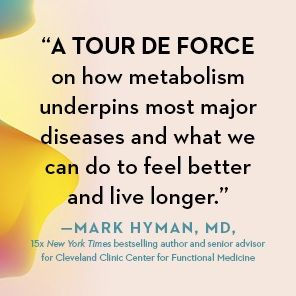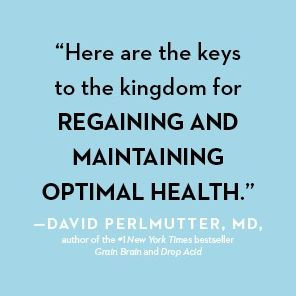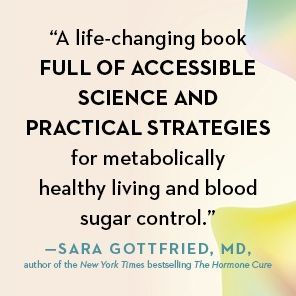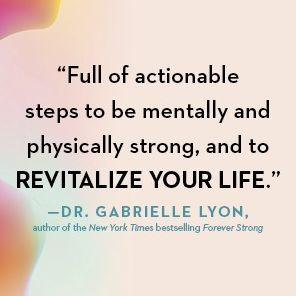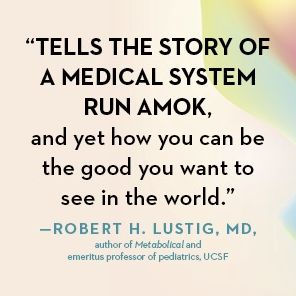Good Energy: The Surprising Connection Between Metabolism and Limitless Health
The instant #1 New York Times bestseller!
A bold new vision for optimizing our health now and in the future
What if depression, anxiety, infertility, insomnia, heart disease, erectile dysfunction, type 2 diabetes, Alzheimer’s, dementia, cancer and many other health conditions that torture and shorten our lives actually have the same root cause?
Our ability to prevent and reverse these conditions - and feel incredible today - is under our control and simpler than we think. The key is our metabolic function - the most important and least understood factor in our overall health. As Dr. Casey Means explains in this groundbreaking book, nearly every health problem we face can be explained by how well the cells in our body create and use energy. To live free from frustrating symptoms and life-threatening disease, we need our cells to be optimally powered so that they can create “good energy,” the essential fuel that impacts every aspect of our physical and mental wellbeing.
If you are battling minor signals of “bad energy” inside your body, it is often a warning sign that more life-threatening illness may emerge later in life. But here’s the good news: for the first time ever, we can monitor our metabolic health in great detail and learn how to improve it ourselves.
Weaving together cutting-edge research and personal stories, as well as groundbreaking data from the health technology company Dr. Means founded, Good Energy offers an essential four-week plan and explains:
Good Energy offers a new, cutting-edge understanding of the true cause of illness that until now has remained hidden. It will help you optimize your ability to live well and stay well at every age.
1144280677
A bold new vision for optimizing our health now and in the future
What if depression, anxiety, infertility, insomnia, heart disease, erectile dysfunction, type 2 diabetes, Alzheimer’s, dementia, cancer and many other health conditions that torture and shorten our lives actually have the same root cause?
Our ability to prevent and reverse these conditions - and feel incredible today - is under our control and simpler than we think. The key is our metabolic function - the most important and least understood factor in our overall health. As Dr. Casey Means explains in this groundbreaking book, nearly every health problem we face can be explained by how well the cells in our body create and use energy. To live free from frustrating symptoms and life-threatening disease, we need our cells to be optimally powered so that they can create “good energy,” the essential fuel that impacts every aspect of our physical and mental wellbeing.
If you are battling minor signals of “bad energy” inside your body, it is often a warning sign that more life-threatening illness may emerge later in life. But here’s the good news: for the first time ever, we can monitor our metabolic health in great detail and learn how to improve it ourselves.
Weaving together cutting-edge research and personal stories, as well as groundbreaking data from the health technology company Dr. Means founded, Good Energy offers an essential four-week plan and explains:
- The five biomarkers that determine your risk for a deadly disease.
- How to use inexpensive tools and technology to “see inside your body” and take action.
- Why dietary philosophies are designed to confuse us, and six lifelong food principles you can implement whether you’re carnivore or vegan.
- The crucial links between sleep, circadian rhythm, and metabolism
- A new framework for exercise focused on building simple movement into everyday activities
- How cold and heat exposure helps build our body’s resilience
- Steps to navigate the medical system to get what you need for optimal health
Good Energy offers a new, cutting-edge understanding of the true cause of illness that until now has remained hidden. It will help you optimize your ability to live well and stay well at every age.
Good Energy: The Surprising Connection Between Metabolism and Limitless Health
The instant #1 New York Times bestseller!
A bold new vision for optimizing our health now and in the future
What if depression, anxiety, infertility, insomnia, heart disease, erectile dysfunction, type 2 diabetes, Alzheimer’s, dementia, cancer and many other health conditions that torture and shorten our lives actually have the same root cause?
Our ability to prevent and reverse these conditions - and feel incredible today - is under our control and simpler than we think. The key is our metabolic function - the most important and least understood factor in our overall health. As Dr. Casey Means explains in this groundbreaking book, nearly every health problem we face can be explained by how well the cells in our body create and use energy. To live free from frustrating symptoms and life-threatening disease, we need our cells to be optimally powered so that they can create “good energy,” the essential fuel that impacts every aspect of our physical and mental wellbeing.
If you are battling minor signals of “bad energy” inside your body, it is often a warning sign that more life-threatening illness may emerge later in life. But here’s the good news: for the first time ever, we can monitor our metabolic health in great detail and learn how to improve it ourselves.
Weaving together cutting-edge research and personal stories, as well as groundbreaking data from the health technology company Dr. Means founded, Good Energy offers an essential four-week plan and explains:
Good Energy offers a new, cutting-edge understanding of the true cause of illness that until now has remained hidden. It will help you optimize your ability to live well and stay well at every age.
A bold new vision for optimizing our health now and in the future
What if depression, anxiety, infertility, insomnia, heart disease, erectile dysfunction, type 2 diabetes, Alzheimer’s, dementia, cancer and many other health conditions that torture and shorten our lives actually have the same root cause?
Our ability to prevent and reverse these conditions - and feel incredible today - is under our control and simpler than we think. The key is our metabolic function - the most important and least understood factor in our overall health. As Dr. Casey Means explains in this groundbreaking book, nearly every health problem we face can be explained by how well the cells in our body create and use energy. To live free from frustrating symptoms and life-threatening disease, we need our cells to be optimally powered so that they can create “good energy,” the essential fuel that impacts every aspect of our physical and mental wellbeing.
If you are battling minor signals of “bad energy” inside your body, it is often a warning sign that more life-threatening illness may emerge later in life. But here’s the good news: for the first time ever, we can monitor our metabolic health in great detail and learn how to improve it ourselves.
Weaving together cutting-edge research and personal stories, as well as groundbreaking data from the health technology company Dr. Means founded, Good Energy offers an essential four-week plan and explains:
- The five biomarkers that determine your risk for a deadly disease.
- How to use inexpensive tools and technology to “see inside your body” and take action.
- Why dietary philosophies are designed to confuse us, and six lifelong food principles you can implement whether you’re carnivore or vegan.
- The crucial links between sleep, circadian rhythm, and metabolism
- A new framework for exercise focused on building simple movement into everyday activities
- How cold and heat exposure helps build our body’s resilience
- Steps to navigate the medical system to get what you need for optimal health
Good Energy offers a new, cutting-edge understanding of the true cause of illness that until now has remained hidden. It will help you optimize your ability to live well and stay well at every age.
28.8
In Stock
5
1

Good Energy: The Surprising Connection Between Metabolism and Limitless Health
400
Good Energy: The Surprising Connection Between Metabolism and Limitless Health
400Hardcover
$28.80
$32.00
Save 10%
Current price is $28.8, Original price is $32. You Save 10%.
28.8
In Stock

Product Details
| ISBN-13: | 9780593712641 |
|---|---|
| Publisher: | Penguin Publishing Group |
| Publication date: | 05/14/2024 |
| Pages: | 400 |
| Sales rank: | 108 |
| Product dimensions: | 9.10(w) x 6.30(h) x 1.40(d) |
About the Author
From the B&N Reads Blog








